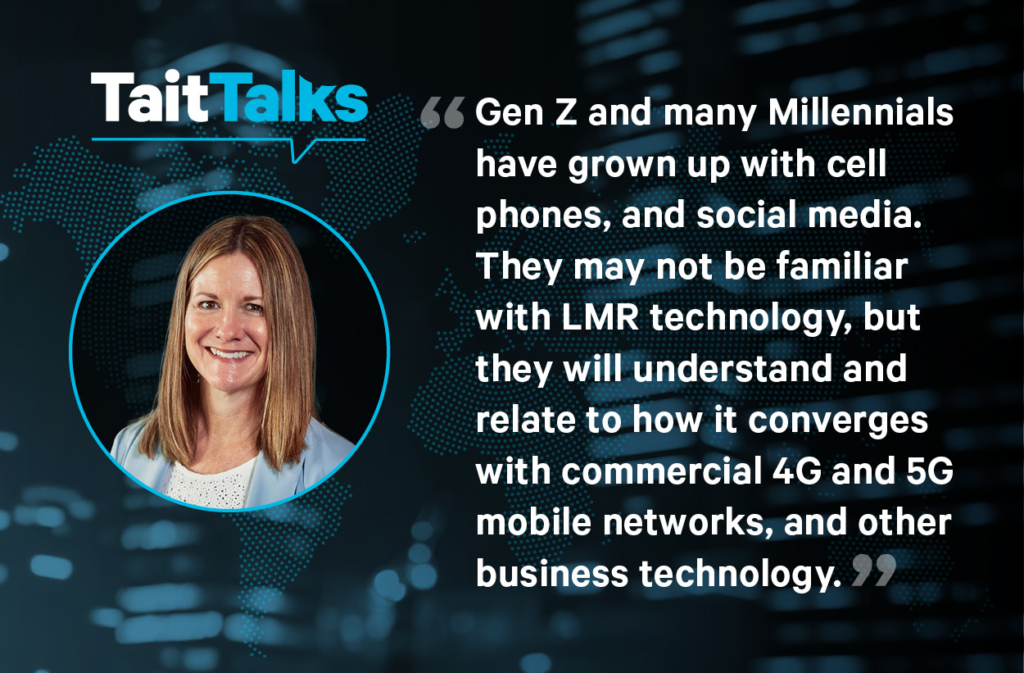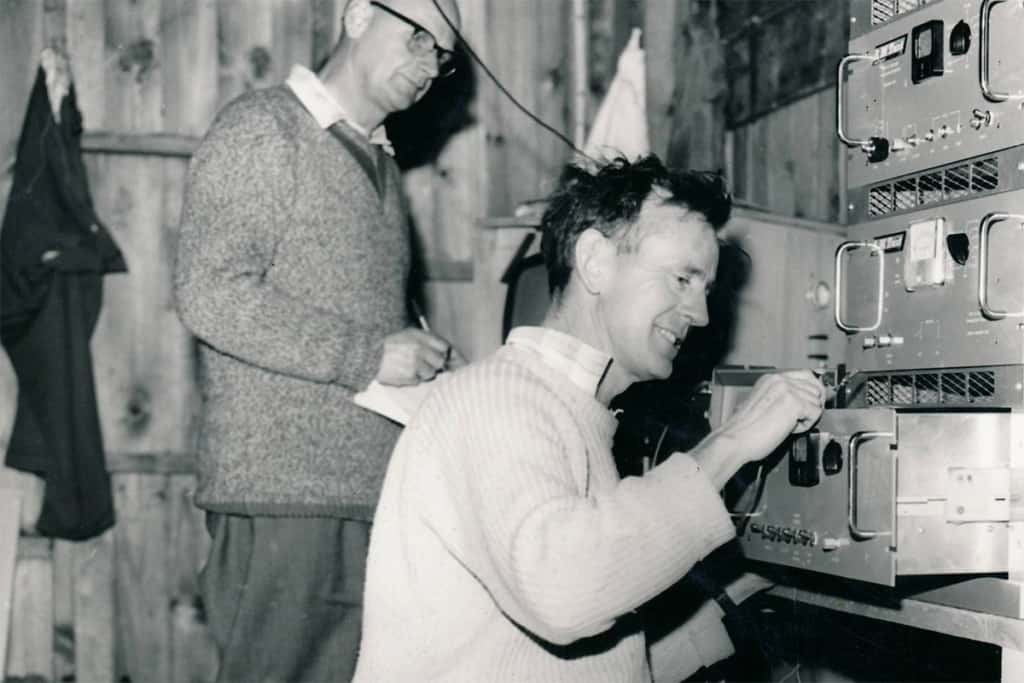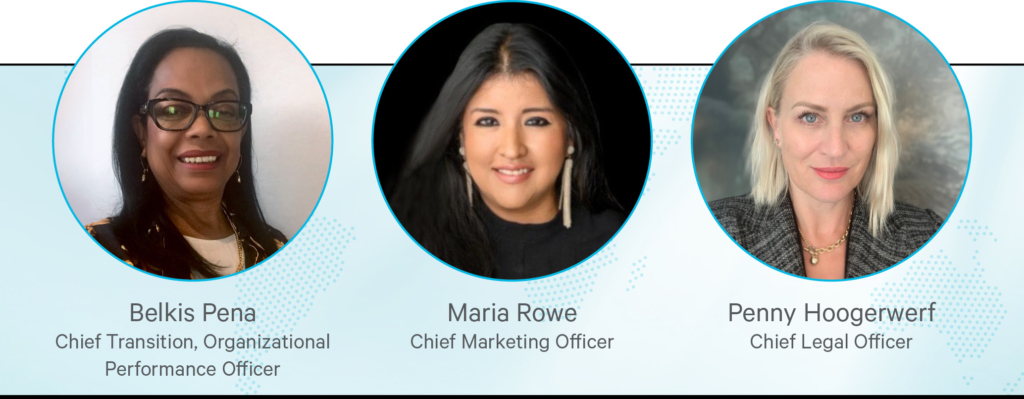In this edition of Tait Talks, join Sandra Wendelken, market insights manager, as they take us through the challenges of retaining RF talent and the macroeconomic changes that have lead to staffing issues in specialized areas across the communications industry.

In recent years, organizations across many industries have found it difficult to find and retain qualified employees. High-tech companies in particular have had a hard time filling engineering and other technical positions. Unfortunately, the staffing problem is not likely to be short-lived. Several global macroeconomic changes, including an aging population and peaking population size, will affect the worldwide workforce for decades to come.
Even before the COVID-19 pandemic hit in 2020, the mission-critical communications industry was experiencing a reduced number of qualified radio frequency (RF) technicians. Many RF technicians began their careers in the military with positions focusing on communications. They gained much of their technical training while serving their countries, later putting their technical skills to work at public sector agencies and private companies that relied on LMR networks. Beginning in the 2000s, the mission-critical communications industry began to experience changes around staffing. Some RF technicians began to retire, and younger employees with technical skills focused on mainstream information technology (IT) and commercial wireless jobs. At the same time, many organizations with RF technicians began to transition those positions to IT departments as they predicted LMR networks would be replaced by broadband systems.
Of course, that prediction has not happened. The number of LMR networks around the world is increasing. Market research firm Omdia predicts a compound annual growth rate of 5.7% from 2022 to 2027 for LMR infrastructure revenues and a CAGR of 6.8% for LMR terminal shipments during the same period. More specifically, the number of Project 25 (P25) conventional networks in the United States increased 31% from 2020 to 2023, according to the P25 Technology Interest Group (PTIG).
Deploying, maintaining and operating critical infrastructure requires a skilled workforce, but the mission-critical communications industry continues to face a shortage of workers with experience in LMR technology and systems. What can agencies and companies do to attract qualified workers?
Invest in education and training programs. Many companies have partnered with universities and companies to nurture future employees with RF expertise. The University of Canterbury (UC), located in Christchurch, New Zealand, where Tait Communications has its headquarters and manufacturing facility, works with Tait engineers, such as Tait’s Software Lead Engineer Dr. Alan Murray, to craft projects and partnerships with the university’s School of Engineering and Wireless Research Centre. The company’s engineers also sit on advisory boards at the university and provide feedback to the school on new courses and other issues.

Sir Angus Tait, Founder of Tait Communications
Sir Angus Tait, founder of Tait Communications, put in place funding for an annual masters and doctorate project at the university that funds a selected engineering project. In addition, Tait funds the Steven Bly Memorial Scholarship in Electrical and Electronic Engineering, which was set up in 1995 and provides NZ$1,500 to support one UC undergraduate student a year. Separately, Tait’s Communications Scholarship is around NZ$5,000 for a student each year. Tait also offers funding for final year undergraduate projects offering industry supervision and mentorship. In addition, the company funds prizes for a high school science fair and provides judges. And summer interns join Tait each year to learn more about the business and its technology because the company understands the importance of hands-on training versus only classroom instruction.
The Radio Club of America (RCA) has a long-standing program to nurture youth who are interested in RF technology. Each year, Carole Parry, who oversees the program, acknowledges middle school and high school students who are working on RF-related projects and many of whom have earned their amateur radio call signs. At the 2022 RCA Awards Banquet, Audrey McElroy, a computer engineering student at the Georgia Institute of Technology, received the RCA Collegiate Achievement Award for developing high-altitude balloon experiments that have reached the edge of space, among other work.

The Radio Frequency Users Association of New Zealand (RFUANZ) is supporting industry training provider E-tec in developing a Level 4 NZQA qualification suitable for training radio technicians. The foundation course is centered on candidates just entering the workforce or existing staff with no formal training.
Showcase technology to attract younger workers. Gen Z and many Millennials have grown up with cell phones, mapping software, social media, and virtual assistants in the palms of their hands. They may not be familiar with LMR technology, but they will understand and relate to how it converges with commercial 4G and 5G mobile networks, wearable technology, in-vehicle systems for connectivity and asset tracking, and other business technology. Mission-critical organizations should lead with the technology that younger generations are familiar with and then explain how LMR fits into a customer’s overall digital transformation plan.
Each year, Tait presents the Steven Bly award for best emerging engineering talent to young engineers within the company. In September 2023, Cameron McDrury, who contributes to audio quality work in radios and speaker mics, and Yafei Qu, who applies his engineering skills to the nationwide Public Safety Network (PSN) project in New Zealand, were honored for their engineering work at the company.
The U.S.-based Enterprise Wireless Alliance (EWA) is compiling a showcase of innovative technologies and applications deployed using business-critical private wireless networks. The U.S. regulatory agency FCC originally requested private wireless innovation information, and EWA plans to follow up on the request regardless of FCC action. If you have innovations to share, contact EWA.
Organizations also need to ensure there is knowledge transfer from one generation to another. As older employees with decades of RF and industry experience retire, they must be encouraged to document and pass on their knowledge to younger employees. Older employees should also mentor younger employees and help set them up for success.
Attract a broader range of talent. It is no secret that the LMR industry has been male dominated and minorities are under-represented. Mission-critical organizations should take action to increase the number of women and minorities that are employed and in leadership positions.

Women comprise three of the seven positions on Tait’s executive team. Every year, the University of Canterbury organizes the Women in Engineering, Canterbury (WiE CAN) camp in January. A series of workshops over the course of five days introduces the women to the university’s Engineering Program and Department. Several companies and foundations, one of which is the Tait Foundation, sponsor the camp.
As a global company, diversity is part of Tait’s DNA with employees located around the world from all backgrounds and cultures. Most LMR companies also have worldwide workforces that span many ethnicities, although there is always more to do to promote diversity and inclusion, which will in turn help alleviate staffing pressures.
As our industry moves forward, the shortage of skilled workers is not a problem that will be easily solved, and it will continue to evolve. Artificial intelligence (AI) technology will undoubtedly bring additional changes to the labor force and to the wider mission-critical communications industry. Of course, competitive salaries, benefits packages, and mental health and wellness services are essential for attracting talent as well. Organizations must focus on all these factors and more to hire and retain the necessary skilled workforce and subsequently thrive in the evolving market. Tait is proud to be leading by example in many of these areas.
Written by: Sandra Wendelken – Market Insights Manager at Tait Communications.
Read the previous Tait Talks topic: Multiband is Great, but Let’s talk Multiprotocol





